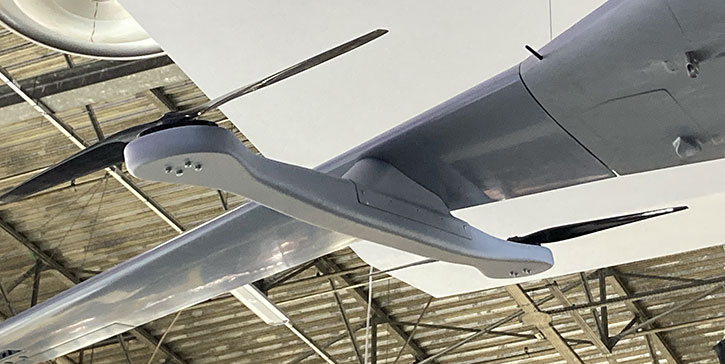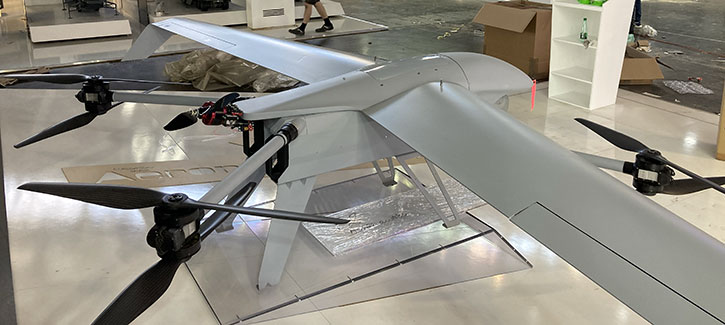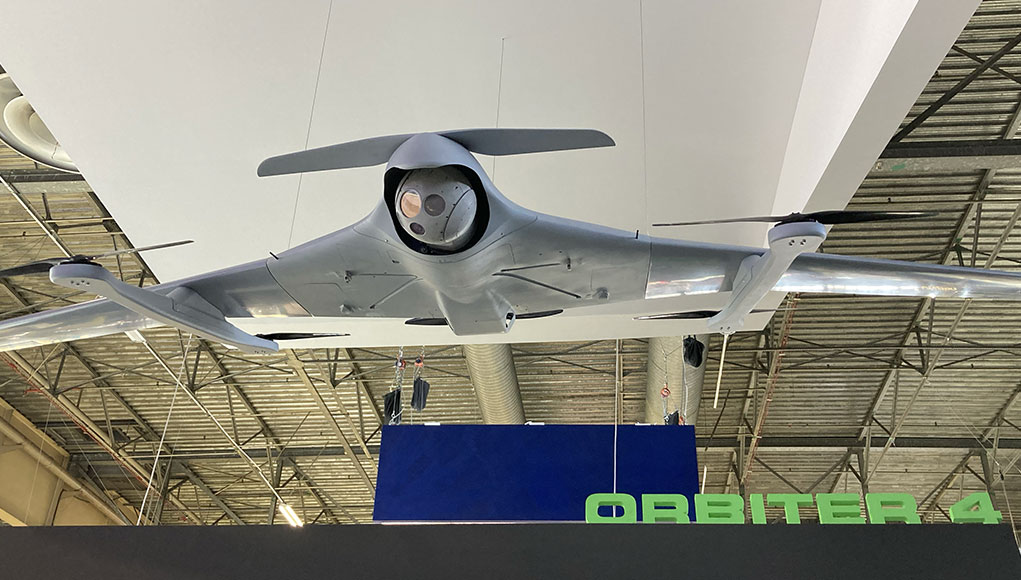The Israeli UAV maker Aeronautics is introducing its Orbiter 4 Small Tactical Unmanned Aerial System (STUAS) modified into a Vertical Takeoff and Landing (VTOL) platform. The VTOL system comprises a kit that can be added to any Orbiter 4, enabling users to operate the drones without ground support (pneumatic launcher, parachute, and airbags). The VTOL kit includes four electrically driven rotors mounted on booms attached under the wings, which also have batteries to drive those rotors. The new attachment enables users to launch and retrieve the Orbiter 4 with a full payload from any flat surface. The kit can be used with any Orbiter 4, including operational aircraft that would need minor adjustments to the wing.
The VTOL kit offers users maximum flexibility for all-terrain mission operation, as it allows users to use the launcher and parachute + airbag to maximize mission endurance of +24 hours or opt to use the VTOL kit to deploy the drone from confined spaces, alas with a shorter mission endurance (over 10 hours).
“One of the most important needs in the modern battlefield is the ability to operate systems flexibly, depending on changing conditions,” says Matan Perry, Chief Marketing Officer and VP of Sales at Aeronautics. “In response to this need, we have developed the Orbiter 4 VTOL kit. Our goal was to keep the superior advantages of the Orbiter 4 as the most advanced UAS in its segment while adding extra flexibility and more autonomy to field personnel.”

Unlike the larger tactical UAS that depend on runways and a substantial logistical footprint, the Orbiter 4 STUAS is designed to deploy from forward, austere locations without using runways for takeoff and landing. These drones are designed to operate missions spanning day and night (24 hours), using multiple payloads that include electro-optical, radar, and electronic surveillance. Dominating the battlespace with UAS is part of the new ThunderStorm concept developed by RAFAEL and Aeronautics. Not much is publicly known about this pioneering concept.
According to RAFAEL, it comprises a network of aerial and ground-based system-of-systems with state-of-the-art Autonomous Mission Management capabilities that ensure battlefield superiority. According to some sources, new and advanced sensors providing persistent surveillance are central to the system. Rafael has recently demonstrated the MICROLITE, an electro-optical scanning payload optimized to fit the Orbiter 4 specifications.
The system provides persistent surveillance of a wide area, day and night, with high-resolution imagery and frequent revisiting, thus enabling effective coverage of large areas, detection, and tracking of multiple targets, including small objects. Recent conflicts have demonstrated the importance of the ability of armies to sustain operations of UAS over the battlespace, even without securing air superiority. Part of the solution is the ability to operate STUAS at low altitude, when those platforms can support advanced payloads that assume the missions of much larger, expensive, and scarce tactical and MALE UAS, operating at medium – to – high altitude.
Aeronautics’ VTOL developments haven’t stopped at the Orbiter. At Eurosatory 2022, the company plans to unveil the Trojan, an Unmanned Hovering Platform (UHP) that positions Aeronautics in a new category of fully electric drones that can take off, land and hover autonomously, at ranges up to 150 km. With this capability, Trojan can perch and stare at observation points, with motors shut down. These capabilities extend its mission endurance beyond the platform’s flight endurance. Trojan offers the same payload capacity as the Orbiter 4 but with unique hovering takeoff and landing capabilities that make it uniquely suitable for persistent surveillance. We shall cover this new platform in an upcoming review later this week.





















